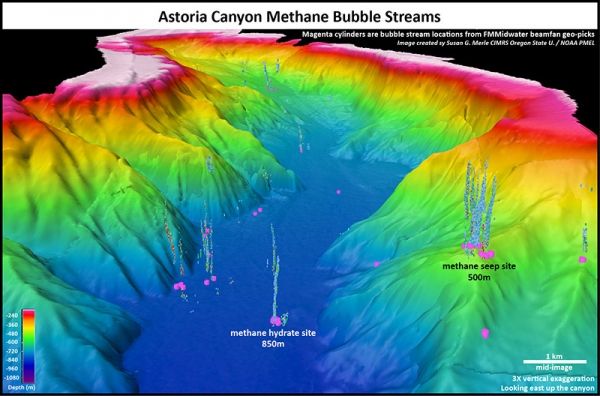However, results of a recently published paper indicate that nearly 3,500 methane bubble streams, clustered into more than 1,300 methane emission sites, emanate from the seafloor from the Strait of Juan de Fuca in the north to the Mendocino Fracture Zone off northern California in the south, in an area known as the Cascadia Margin.
Derived from data collected during multibeam mapping surveys on Exploration Vessel (E/V) Nautilus supported by NOAA Ocean Exploration, as well as the Research Vessel (R/V) Thompson and NOAA Ship Rainier and historical data, the discovery sheds new light on the extent and distribution of seafloor methane seeps. These seeps may provide important habitat for marine life and could play an important role in ocean warming.
The results , published in the scientific journal Frontiers of Earth Science by scientists from the Oregon State University-NOAA Cooperative Institute for Marine Resources Studies (CIMRS), University of Washington, U.S. Naval Research Lab at Stennis Space Center, and Ocean Exploration Trust, provide a major contribution to the first systematic “baseline” survey of methane seeps published over such a large area, representing over 40% of the 93,000 square kilometers (35,900 square miles) of the U.S. Cascadia margin.
Continue reading at NOAA Ocean Exploration
Image via NOAA Ocean Exploration


